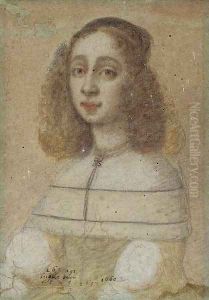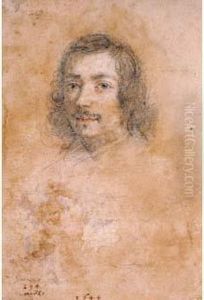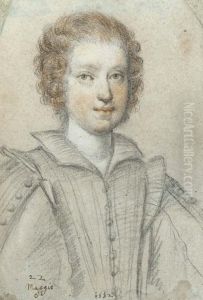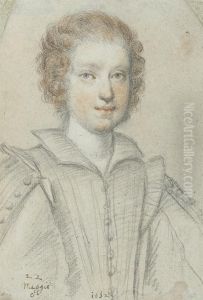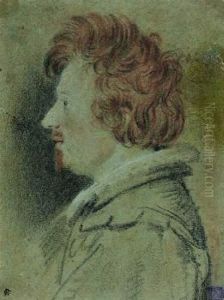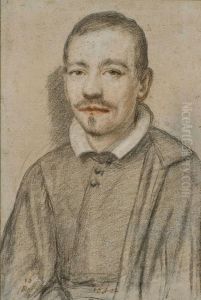Ippolito Leoni Paintings
Ippolito Leoni was an Italian painter and engraver, born in 1576 in Milan, a city in the Lombardy region of northern Italy, which was a significant center for art and culture during the Renaissance and Baroque periods. His work primarily falls into the late Renaissance and early Baroque periods, reflecting the transition in artistic styles and tastes that occurred during his lifetime. Leoni is less known today compared to his contemporaries, but his contributions to Italian art, particularly in portraiture and religious themes, provide valuable insight into the stylistic evolution and preferences of his era.
Leoni's artistic training and early influences are not thoroughly documented, but it is believed that he was part of the vibrant artistic community in Milan and may have been influenced by or had interactions with some of the prominent artists in the city during the late 16th and early 17th centuries. His style suggests that he was aware of the Mannerist tendencies prevalent among his predecessors and peers, yet his work also begins to embrace the more naturalistic and dramatic elements that characterized the Baroque movement.
Throughout his career, Ippolito Leoni produced a range of works, including religious paintings, portraits, and engravings. His portraits, in particular, demonstrate a keen eye for detail and an ability to capture the personality and status of his subjects, which was a crucial aspect of successful portraiture at the time. These works would have catered to the demands of the upper class and ecclesiastical patrons, who sought to immortalize their likenesses and power in art.
Leoni's religious paintings, on the other hand, reflect the Counter-Reformation's call for art that communicated religious themes with clarity, emotion, and devotion. This was a time when the Catholic Church was reasserting its authority and the role of art as a tool for religious expression and education was emphasized. His works in this genre would have contributed to the visual culture of Catholicism in the period, engaging viewers with their expressive figures and compelling narratives.
Ippolito Leoni died in 1626 in Milan. While he may not have achieved the same level of fame as some of his contemporaries, his body of work provides an interesting lens through which to view the artistic transitions of his time. Today, Leoni's paintings and engravings can be found in collections and museums that focus on Italian Renaissance and Baroque art, where they continue to be studied and appreciated for their contributions to the rich tapestry of Italian art history.
